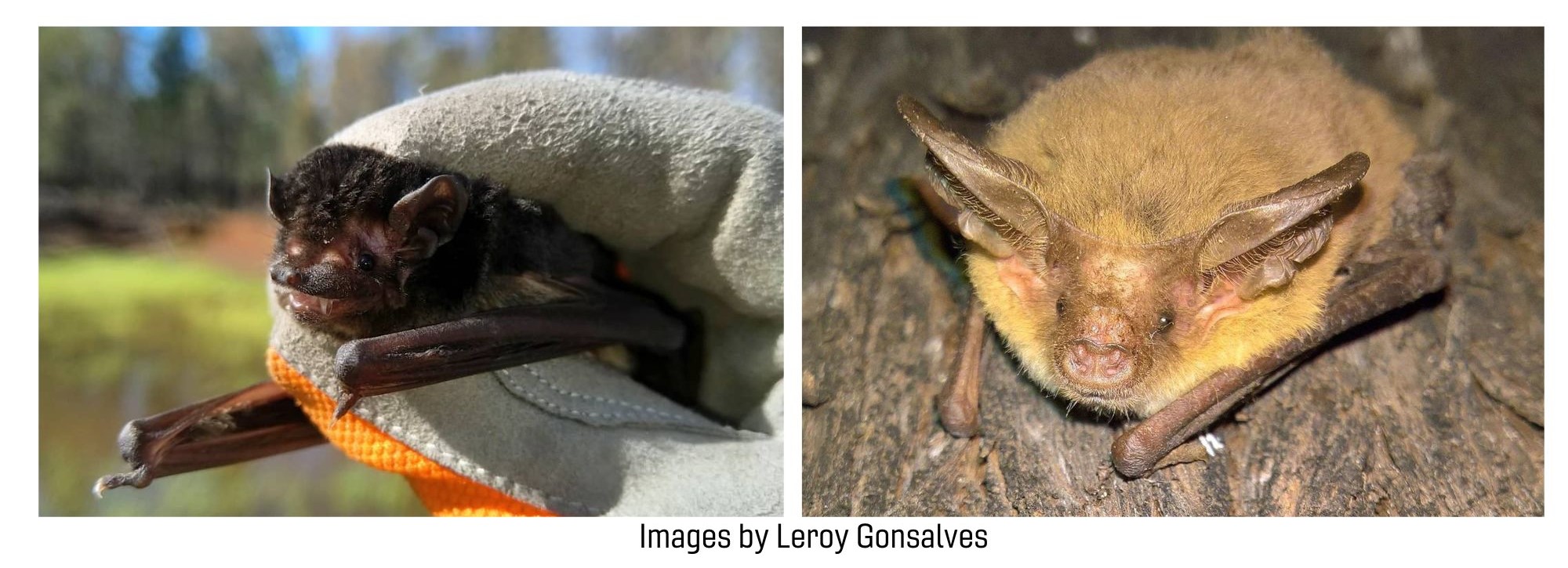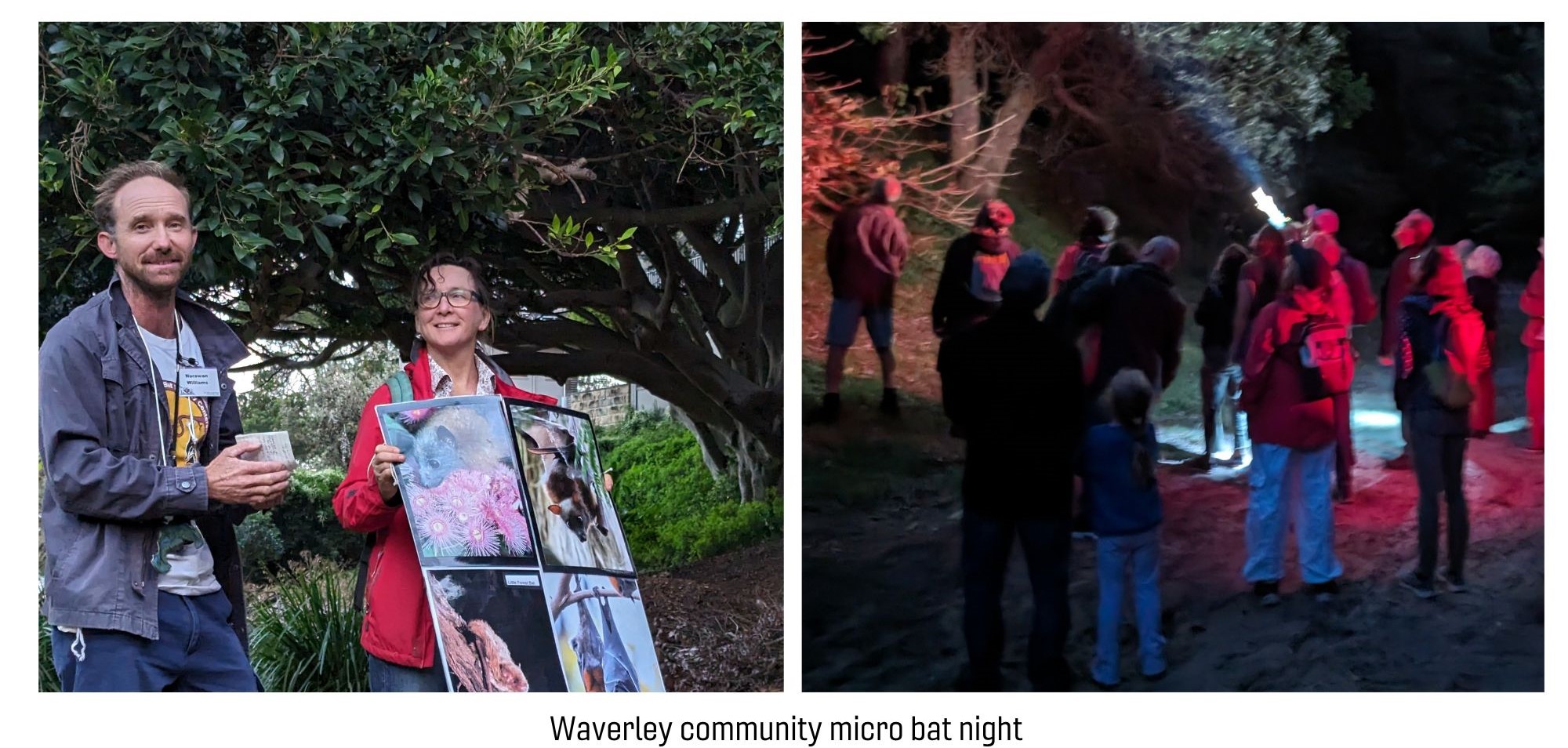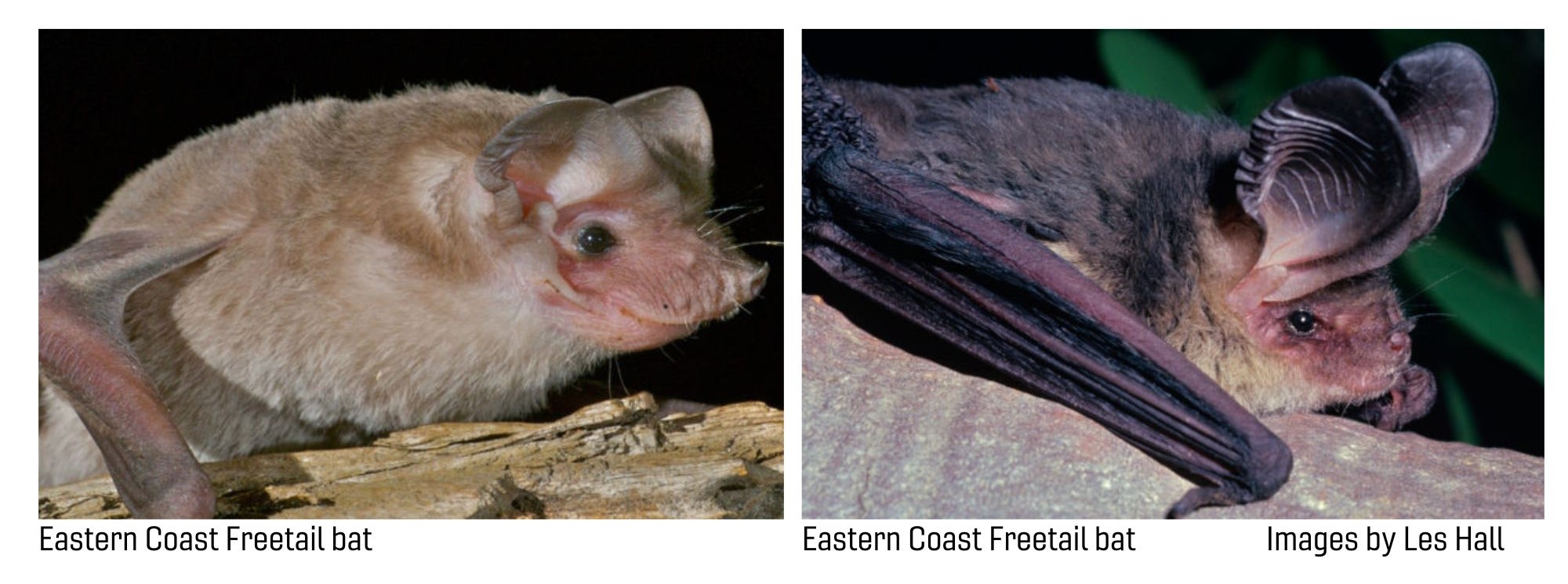Waverley Local Sandra Guy is a community education coordinator at Sydney Wildlife Rescue and the bat specialist for the Central Branch. This month, she answers some questions about the extraordinary microbats that live among us in Waverley but that we rarely see. Unfortunately, half of Sydney microbats are listed as threatened species. Read on for more information about these mini marvels and what we can do to help them thrive.
Microbats are an extraordinary group of animals but most of us are barely aware of them even though there are approximately 20 species found in and around Sydney and almost 90 species in Australia. This makes them the most common and diverse group of mammals still surviving in our city. They are tiny, quiet, fast and nocturnal; unlike their large and loud megabat cousins, the fruit bats. While a microbat might be quite close to us, even roosting or foraging in our yards, we might never notice them. In fact, scientists are still finding new species of Microbats in Australia today. However, sadly, half of Sydney’s 20 microbat species are listed as threatened.

Why are they called Microbats?
Microbats are very small – ranging from four cm to 20 cm in length. The smallest Australian microbat weighs less than a tablespoon of water and the largest is about the size of an adult hand, even with its wings fully outstretched. They are a vital natural source of insect control because they eat vast numbers of flying insects, such as beetles, moths and mosquitoes. In fact, a microbat can eat up to half its body weight in insects every night! Microbats are active at night although you can sometimes see them flying in groups at dusk during the summer months. A good place to see them at night is around the floodlights of coastal parks or sporting fields, swooping into the light to catch insects in the air, known as “hawking”.
Why don’t we see them?
Microbats roost (rest and sleep) during the day and forage for food at night, and thus avoid being seen much of the time. They like to roost in tree hollows, under bark or in caves. While they prefer to roost in large groups for warmth and protection, fewer tree hollows in urban areas make it very tricky for colonies to find a suitable place to live together. Many microbats have adapted to living in urban areas by roosting in man-made structures such as buildings, sheds, garages and ceilings.
Many of Waverley’s Microbats roost in the crevices in the coastal cliffs during the day and shelter in wet and stormy weather. In good weather, they take advantage of the updraughts from the ocean to forage and hawk insects.
Microbats cannot stand on their hind legs and spend their time either hanging or flying. Although microbats have a small wingspan, they are very capable flyers. Microbats can see, but rather than using their eyesight, they detect obstacles in their path and hunt for food in the dark using echolocation, which is when the bat emits very high-frequency sound waves that humans can’t hear. These sound waves bounce off prey and nearby objects and back to the bat. These frequencies of echolocation are different for each species, and ecologists use specialised equipment to record and identify where different microbat species live.

Which Microbats live in Waverley?
Waverley’s Urban Ecology Coordinator, Sue Stevens, tells us more.
Last month Council hosted a Community Microbat Night at Bronte Gully, where local residents gathered at sunset to look for and learn about local microbats. We were lucky to see a Gould’s Wattled Bat dart through the air and grab some dinner before we walked up the gully for further discussion, spotlighting and information sharing.
At least five species of microbats have been recorded in Waverley, listed below. A recent 2024 survey, which engaged a wildlife ecologist to survey public spaces for microbat presence, identified an additional species - the Little Bent- wing Bat.
- Gould’s Wattled Bat: Can be found in most habitats and roosts in tree hollows and buildings.
- Eastern Coastal Free-tailed Bat (threatened): Forages above the canopy and the edge of forests, roosts in tree hollows, under bark and buildings.
- Large-eared Pied Bat (threatened): Found in woodland areas and around caves and can roost in colonies of up to 30 animals.
- Large Bent-winged Bat (threatened) - Found around caves and manmade structures such as stormwater drains, old buildings and timber structures.
- Little Bent-wing Bat (threatened) - Roost in caves, mine tunnels and tree hollows. They often roost together in colonies of many hundreds.
Microbat species have also been recorded in Centennial Park, adjoining Waverley LGA. A microbat survey was carried out in January and May of 2022 and found that microbats that roost within the park are likely to forage within Waverley LGA at various times, given most species will travel numerous kilometres to forage. In addition to the species above, additional microbats found in the park include:
- Large-footed Myotis (threatened) - tend to roost in caves, tree hollows, under bridges, in mines, road culverts and stormwater drains near permanent water.
- White striped free-tail Bat - roost in hollows in old trees and under loose bark, in dead stumps and the ceilings of buildings. Up to several hundred bats live together in a colony.
- Yellow-bellied Sheath-tail Bat (threatened) - roost in hollows in old trees and sometimes in the abandoned nests of sugar gliders. They usually form small colonies of up to 30.
- Lesser Long-eared Bat - They roost in hollows and fissures in old trees, under bark, in old fairy marten nests, and occasionally in caves. They often roost in ceilings, hollow walls, unused roller doors and canvas awnings in suburban and inner-city areas.
- Eastern Free-tailed Bat - Live in a wide range of habitats, from tall open forests to open woodland, in tree hollows and spouts.,

What are the local threats to microbats?
Three of Waverley’s known microbats are Threatened Species. Urban microbats are facing a number of pressures and threats:
- Loss of habitat such as tree hollows
- Predation by cats and other animals
- Loss of insect food availability, including the destruction of insect populations by the use of household insect sprays and other insect-killing devices.
- Light pollution is harmful to bats and their insect prey. Artificial, bright light disrupts navigation, roosting and feeding.
How you can help Microbats survive and thrive in Waverley?
- Eliminate or minimise the use of outdoor lights in your garden and around your house. If you must have external lighting, ‘warmer’ coloured lights, with red, orange or yellow tones, are much better for a whole range of wildlife than harsh blue and white lights, which trick some species into thinking it is daytime.
- Avoid using insecticides, even the ‘natural’ and ‘organic’ ones and avoid other insect control tools such as sticky traps. Plant your garden with a variety of native plants to support bat and insect habitats.
- Keep cats either indoors, or in a cat net when outside. Even a well-fed cat will hunt and kill wildlife.
- If you do not mind microbats making your shed or garage their home, keep branches trimmed away from the entrance to the building so they have a clear flight path.
- Remove any wires, especially barbed wire, from around your property, to make your garden safer for bats and other animals.

Bat detectors that attach to smartphones are now on the market, making bat-spotting much more affordable and accessible than previously. Do you have a bat detector and use it to search for microbats in your backyard or neighbourhood? Let us know! At urbanecology@waverley.nsw.gov.au
If you find an injured microbat, make sure it is safe from predators such as dogs or cats if it is on the ground, and contact:
Sydney Wildlife Rescue: 9413-4300 or see Sydney Wildlife Rescue | Home
WIRES: 1300 094 737 WIRES Australian Wildlife Rescue Organisation

